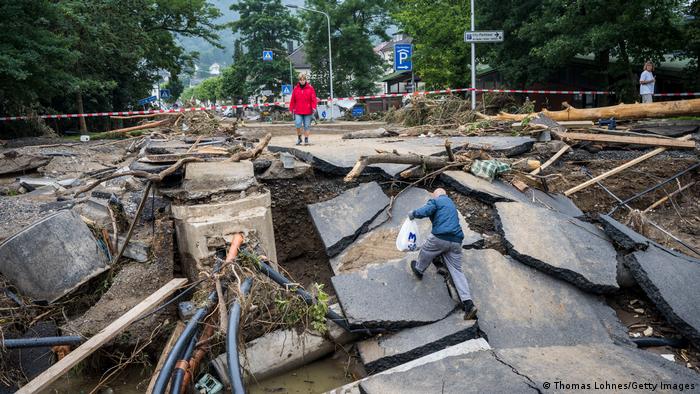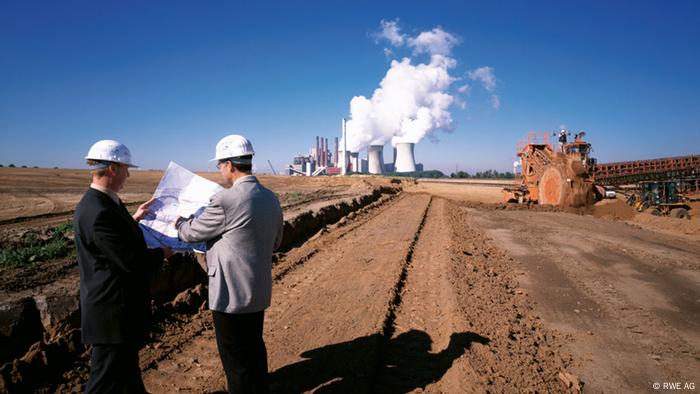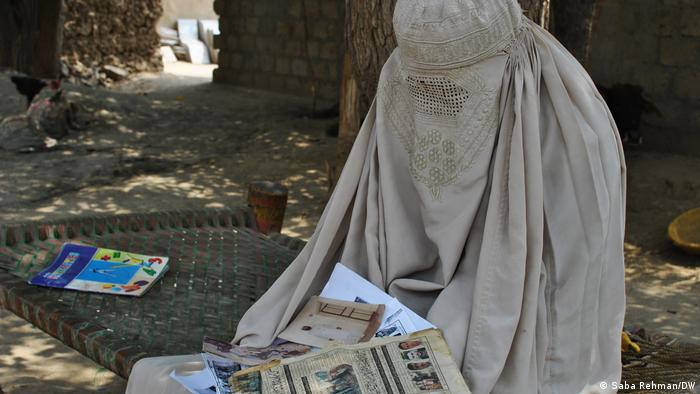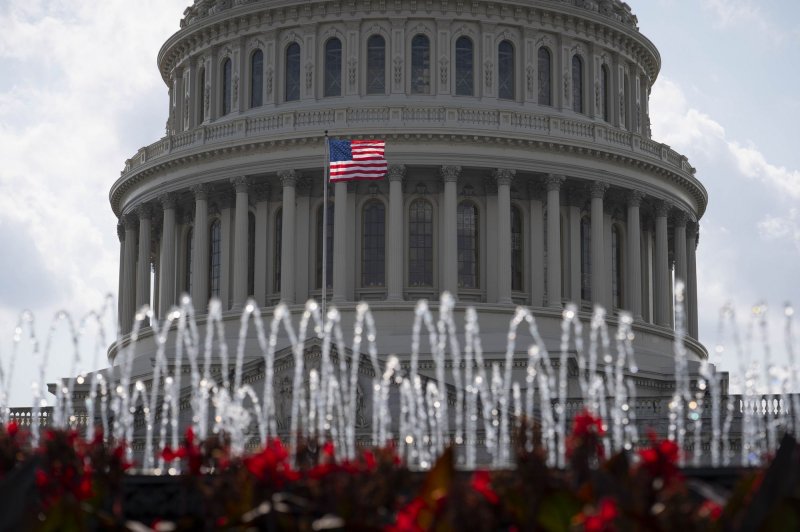A damaging heat wave is sweeping across North Africa in the wake of the release of the IPCC findings on climate change. Some experts in Africa say the panel hit the right tone and the onus to act is on the continent too.
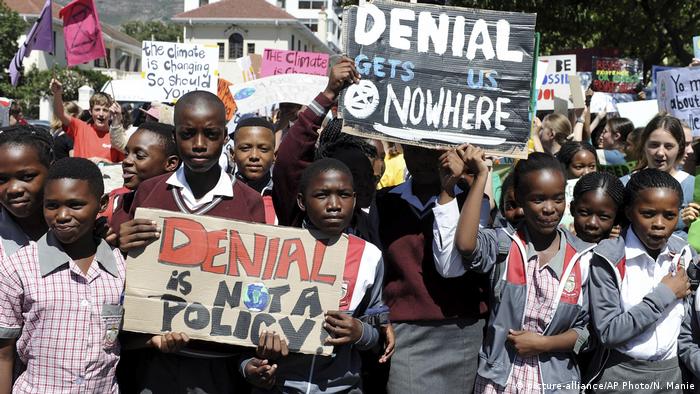
The latest Intergovernmental Panel on Climate Change (IPCC) report outlines the severity of the global climate crisis. According to the UN body, the crisis poses not only a policy problem but a global political challenge.
Some analysts have been quick to question the difference between the latest IPCC assessment and those over three decades. But experts in Africa see a distinct change of tone as what used to be the reality for the continent now becomes a global reality.
Europe and the US are dealing with extreme climatic conditions and this has generated a new degree of urgency, said Oladosu Adenike, a Nigerian climate activist, eco-feminist and the initiator of the Fridays for Future movement in Nigeria.
"With extreme weather everywhere, climate change is now a global reality… in Africa, climate change is no longer a threat but a reality,” she told DW.
"Many are still in denial. Some people tried to criticize the whole thing but now these reports have made it clear and even clearer that it is now a reality in Africa, Europe, Asia and every part of the world."
Watch video02:59 Greece wildfires: Devastation on Evia island
No time
Dickens Kamugisha, the CEO of the Africa Institute for Energy Governance (AFIEGO) says the latest IPCC report has a sense of urgency.
"This report is unique in the way it is presented because it clearly shows that we no longer have any time to wait before we change. It is showing that each and every one must commit if we are to save this world," Kamugisha told DW.
"So, if you compare this report with previous reports, in a way this report is very precise that we are now almost beyond the limit.”
Previous IPCC reports had clearly articulated the dangers of climate change, with the commitments to act set for some time in the future.
Watch video02:05 IPCC report: Climate crisis 'code red' for humanity
The argument has been that developing countries contribute very little to climate change and environmental degradation and the onus should therefore be on the West to take decisive action. Experts are now increasingly challenging that perspective and arguing that Africa needs to act because the continent is feeling climate change the most.
"We have got to redouble our own efforts to build resilience, to invest in inclusive, resilient cities," said Wanjira Mathai, the vice-president and regional director for Africa at the World Resource Institute.
"And that's really important even as we put pressure on developed countries and some of the big emitters in the globe that have been responsible in many ways for this sort of doomsday scenario we are facing."
That would mean that African countries take the intiative and lead with practical solutions. Are African leaders ready to take action?
"We can take that lead if we really want to. If Africa can take the lead, I assure you that other countries will be serious. They will know that we are ready for business but not business as usual,” Oladosu Adenike, the Nigerian eco-feminist explained.
The AFIEGO CEO Dickens Kamugisha has a similiar view and said he believes the time is past for African nations to be making excuses.
"It is very true that Africa contributes about 3% of the greenhouse gases that are causing climate change. I think we should not use it as an excuse that we are contributing little and end up destroying the forests, wetlands and all the nature that is supposed to help us at least reduce the gases that are going to the sky," Kamugisha told DW.
Watch video03:43 Time for action on Africa's Great Green Wall
Pay up
A report by the NGO Oxfam states that many recent climate commitments from companies have not been backed by detailed plans and are likely going to rely on land-based carbon offset efforts. Some experts have warned that this would create the conditions for land grabs.
Furthermore, pledges from oil and gas companies such as BP, Eni, Shell, and Total Energies would require large-scale foresting to reach net-zero carbon emissions by 2050.
"Why do we have to wait for 2030 or 2050 before we can act or get to climate neutrality? Not listening or not taking action is a crime against humanity,” Adenike said.
The argument that African nations need to do more in no way suggests that the biggest contributors to climate change should be absolved of responsibility, say experts.
Wanjira Mathai of the World Resource Institute is of the view that more needs to be done to ensure that those who have either caused or benefited from the climate crisis, pay more.
"We absolutely have to put pressure on those countries and those economies that have benefited from this emission with heavy industrialization to pay up and to support with the commitments that were made in the Paris Agreement. There was a very clear commitment to $100 billion a year and we are 10 years in, and that money has not been seen at that scale," Mathai said. "We've got to get serious about climate finance."

Wanjira Mathai also chairs of the Wangari Maathai Foundation and previously chaired the Green Belt Movement in Kenya.
Act now
The overriding sentiment among experts is that African countries need to start taking concrete action on climate change and environmental degradation, according to Mathai.
"In Nairobi today, we have developments that are going on that are really concerning. We have entire walkways being ploughed of the trees that exist, trees that have been standing there for four decades. And instead of us thinking through how we are going to plan around them, plan for pedestrian walkways that are inclusive of green vegetation, we are cutting them down. That has got to change,” Mathai told DW.
This position is supported by others who say the latest IPCC assessment is a call for everyone including Africans to take action.
"The report clearly calls upon everyone in the world including developed countries to ensure that they stop the challenges of climate change," says Dickens Kamugisha.
"Here in Uganda, you have really huge projects of oil –1,400 metres of pipeline. And the project will be producing around 102 million metric tons of carbon. We've seen in Nigeria, Chad, Angola, companies just continue the projects – however risky they are – and the unfortunate thing is that these projects do not benefit those communities.”

A new project will see oill from Uganda pumped to Tanzania after the first extraction planned for 2025
The urgency of the climate crisis for Africa and the rest of the world is not only because of the effects on weather patterns, according to IPPC and Africa's experts agree.
"They have been seeing how it's fueling refugee crises, migration, insecurity and other kinds of crises,” Oladosu Adenike explained.
In 2007, the UN attributed the Darfur conflict in Sudan to climate change. Some two years later, the then US president Barack Obama highlighted that "there is little scientific dispute that if we do nothing, we will face more drought, more famine, more mass displacement – all of which will fuel more conflict for decades."



